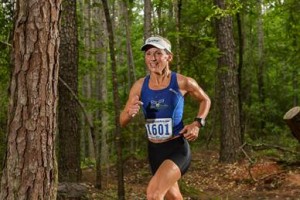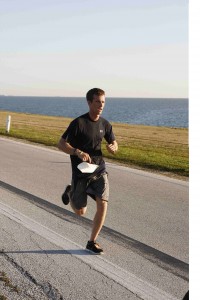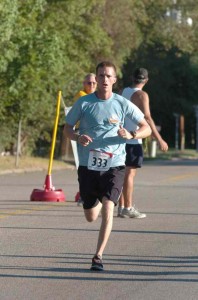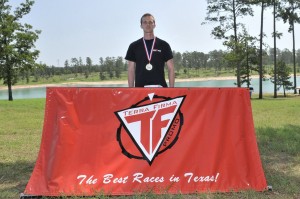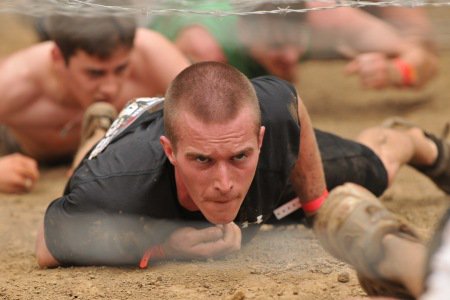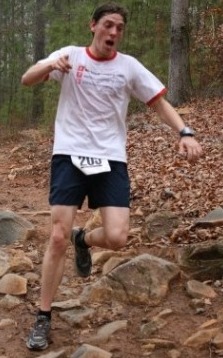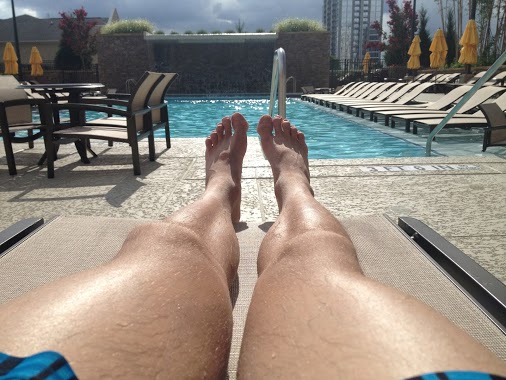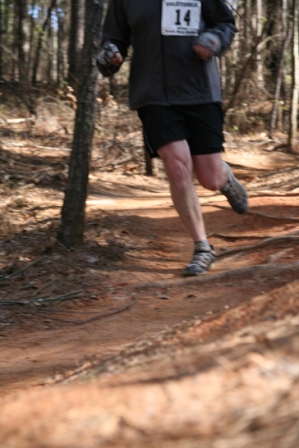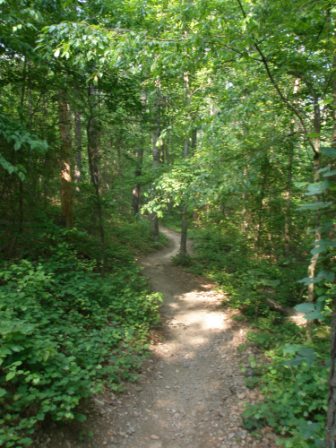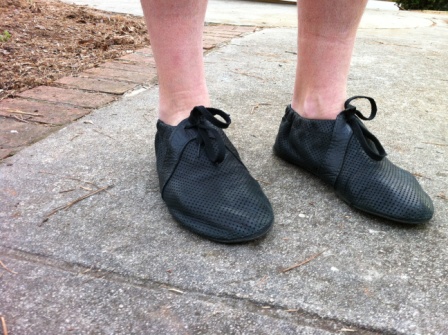
Several months ago I acquired a pair of RunAmoc trail running shoes/moccasins from Soft Star shoes. If you would like to skip all of the details of the review below, I will cut to the chase: I highly recommend these shoes. If you are a barefoot road runner who wants to transition to trails, these would be an ideal choice. If you are a minimalist runner, and want a truly minimal shoe for road or trails, these probably trump any other product on the market when it comes to minimalism.
The sole of the shoe is a composite produced by Vibram, with a very light tread. The thickness is completely uniform and only about 3mm thick. Soft Star also makes a version of the RunAmoc with a thicker sole and aggressive tread, but given my bias towards absolute minimalism (bare), I ordered their ‘street’ shoe. The upper is 100% leather and is perforated throughout for great ventilation. A simple drawstring around the ankle allows the shoe to be secured at the front with a typical knot.
Until a few months ago, I was running between 30 and 60 miles a week (I had to quit running at the end of 2011 while I finished my doctoral degree and searched for a job). Since 2007, I have been a barefoot purist, running without anything on my feet and disliking the way many have used ‘barefoot running’ as a substitute for ‘minimalist running‘. This, of course, has made winter running a bit difficult, as I’ve always been too proud to cover my feet, even when temperatures are sub-freezing (the two exceptions being for December marathons with start temperatures in the 20s). Aside from the two winter marathons that I ran in Land’s End slippers (similar to leather-bottom moccasins), I have run one marathon barefoot, as wells as some 5k and 10k races. I also enjoy summer all-comers track meets, and typically compete in the 1500/mile. To keep myself fit for track racing, my weekly running typically incorporates short intervals at the track (400m) and tempo runs. The majority of my running over the past few years has been done in Durham, North Carolina and Atlanta, Georgia, but I have also run barefoot as I’ve traveled within the U.S. and abroad.
Benefits of the shoe: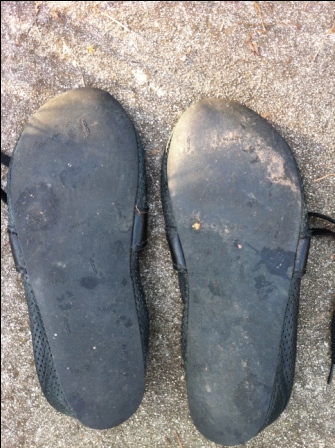
1. Foremost, these shoes have enabled me to begin trail running. Although I love to mountain bike, I didn’t realize how exhilarating trail-running would be. I’ve used the shoes both for casual runs and for one 15k trail run. In all cases, they performed excellently.
2. The sole of the shoe is truly minimalist. Unlike other minimalist running shoes on the market, the sole of this shoe has a uniform thickness and is quite thin. Even Vibram FiverFingers or Fila Skeletoes add additional material in certain areas around the heel, ball, and toes. The sole uniformity is beneficial because it ensures that the shoe will be less likely to cause problems in a proper barefoot stride, meaning that moving back and forth between barefoot running and RunAmoc running will be as seamless as possible. For me, this means that I can easily interchange days running barefoot on the road and using RunAmocs on the trail, or wearing RunAmocs on cold days and running barefoot on warmer days.
3. The shoes are very lightweight and durable. After a few months of running, they have shown very little wear.
4. The perforated upper makes the shoe very breathable (as well as contributing to the lack of weight). With plenty of air gliding across your foot, you really don’t feel like you’re wearing a shoe.
5. The shoe is quite wide at the ball of the foot, and is not restrictive around the foot – it allows plenty of room for the foot to expand naturally while contacting the ground. Despite this, the shoe never felt too loose while trail running. It always maintained contact with the foot without shifting.
Downsides of the shoe:
1. The shoes left a black residue on my feet during the first few weeks of running. This was not a major problem – just an annoyance.
2. In my personal opinion, the shoes aren’t nearly as cool looking as other products on the market. Soft Star has partly rectified this issue, as they have introduced a number of new moccasins in the latter part of 2011.
3. Given their light weight, and the perforated upper, these shoes are not ideal for very low temperatures (low, of course, is a subjective assessment). They are definitely much better than running completely barefoot on cold pavement, but other shoes on the market would provide more warmth.
I should emphasize one aspect of these shoes: I have found these shoes ideal for trail running, but for many other runners, the sole would be too thin. In particular, if you are a barefoot road runner, seeking to transition to trails, these shoes would probably suit you perfectly. If you are simply looking for a minimalist road running shoe (whether or not you have any experience with minimalist running) these shoes would also probably suit you perfectly. However, if you are looking for a minimalist trail running shoe and don’t have any experience with barefoot running, I believe the RunAmoc with thicker ‘trail’ sole would be better.
In conclusion, I absolutely love my RunAmocs. They have performed well in a variety of conditions and are the most minimal shoe that I have put on my foot. There is no doubt that I will be a long-time Soft Star customer as I will continue to use their products off-road and in cold weather.


